Free resources for app creators
Top 5 Challenges Faced By Startups While Developing Mobile Apps
Developing an app may sound challenging. It’s not easy as it may sound. With the help of a team, translating a person’s idea into a product is a whole different game. Ideas can be different but the development process remains the same. While technical challenges aside, there are other challenges that a startup can run into while developing an app. It is wise to discuss and understand those challenges and be well prepared before you even take the plunge.
The right approach while developing a mobile app starts with assessing its chances of feasibility. Your app idea may offer a unique value proposition to your customers. But to ensure that the time and effort spent are really worth it, the potential challenges or roadblocks must be duly acknowledged and addressed.
Common challenges that startups face while developing a mobile app
Technical
Every app idea has its own technical difficulties in implementation. Being cognizant about the technical limitations can help you in implementing your app idea in a better way. If you are a non-technical founder and relying on an external development team, then you should definitely take the below points into account.
- Assess the technical capabilities of the team
- Get the reference of their previous projects which were built on the same technology
- Include the developer in the weekly calls and address his problems
- Acknowledge the developers’ efforts
- Don’t hesitate to point out the technical glitches
There can also be instances where you have to reconsider your app idea. For instance, If your app’s functionality depends on tracking the user screen interaction by taking screen captures, it can be a hassle. This is because Apple does not allow screen captures to record user screen interaction.
Legal
As an entrepreneur you are very excited about the app idea, it’s development and marketing. But have you ever given a thought to consider the legal issues your app might run into? There are very basic legal issues that you need to consider like signing an NDA with the development agency before you even discuss the app idea with them.
Some of the basic legal issues are
- App Development Contract
- Entity formation
- Intellectual Property Ownership
- Patent
- User Generated Content (UGC)
- DMCA
- Restricted content policy
For instance: In many Asian countries, sport-betting apps are illegal. If you’re banking on developing the best sports betting app for the Asian market, you’ll want to take a closer look at regulations in that country. If you haven’t researched the legal considerations of your app, you could waste a lot of time and money on an app that is not feasible.
With the GDPR, the processing of personal data has it’s own compliance issues. If you are developing an app that collects kids data from the individuals in the EU then parental consent is required to process the data. Even though your app startup may not be operating directly from any of the EU countries but your app processes and controls the data. This is sufficient for your app startup to comply with GDPR.
Regulatory
Some industries have regulatory requirements and your app may require approval from more than one regulatory body. For instance, if you’re building an app to teach restaurant workers how to handle food safely, it’ll need to be approved by the Department of Health and Safety. Make sure you understand the regulations surrounding your app’s core functions before you invest too much money and effort.
App Marketing
As an app entrepreneur, your job doesn’t stop with developing the app. The overall success of any startup lies in marketing the app and putting it before the audience. User acquisition and adoption help you with the user feedback to improve your app. Some of the basic marketing routines that you can follow for marketing your app are putting up a landing page, app store optimization, social media outreach, influencer marketing. Initially, the above activities can help you get traction. Read about other strategic ways by which you can use your existing app users to market your app.
Finding the right development team
If you are a non-technical founder and have been looking out for ways to find the right development agency, you are not alone. We have all been there, right? There are multiple steps that you need to consider while finding the right development team for your app. Below are a few areas that you need to pay attention to,
- Competence and the capability of the team
- Clear Communication
- Character and attitude of the team
Conclusion
We believe the above pointers discussed must have given you a clear idea about the basic legal issues that app entrepreneurs can run into while developing the mobile app. Having known the basic legal issues now it’s time for you to seek a legal advisor’s help to get into the details of these legal issues. We wish you good luck in developing your app!
Pro tip: Now that you have identified the legal factors that might derail your app idea. You may also be interested in knowing the other factors like market need, business plan, time to market, requirement clarity, etc. At Appomate, we have put together all this as a package for you called “App Readiness Accelerator Kit”. Download it now!
What are the different stages in startup funding?
Every early-stage startup is bootstrapped growing their business with little or no VC funding. Once the startup picks up, business operations and resources expand and the startup will need funding to manage the operations and the whereabouts. This means that the startup founders must have a better understanding of different stages in startup funding.
To cite, in a previous blog – Creative ways to seed fund your app idea, we looked at why and when tech startups choose to raise funds and explored four major types of fundraising: crowdfunding, angel investors, venture firms, and IPOs.
Applying that now let’s take a look at the different stages of startup funding and get into details of how much money startups might seek at each stage.
SEED FUNDING
Seed funds are raised during the early stages of a startup. Investors contribute a small amount of money to bring an idea to life. The immediate goal is to produce a minimum viable product.
Seed capital often comes from the company founders’ personal assets, from their friends and family, and sometimes from angel investors. Professional investors and banks see this as a very risky investment. If they do invest, professional investors may seek a considerable equity stake, as they are accepting a high amount of risk.
Seed funding is mainly used for preliminary market research and to develop the minimum viable product. It may also be used for initial marketing of your product to test your market and gain some traction.
Funding range: $50,000 – $1,000,000
- Facebook’s first ads (May 2004) only generated approx. $2,400 in ad revenue. By June 2004, they raised a $500,000 which resulted in angel investor Peter Thiel agreeing to invest $5,000,000 into the project. This money was initially structured as a loan, the financing was later converted to a 10.2% equity stake in the company for Peter Thiel.
SERIES A FUNDING
The next step is usually getting a working product into the market and Series-A funding is the first round of institutional Venture capital funding once an idea has reached this stage.
The name refers to the Series-A preferred stock offered to the investors in exchange for their equity.
Typically, these funds are used for the first two years of operating costs, including software development, server maintenance, marketing, and other business operational costs.
Funding range: $2,000,000 to $10,000,000, in exchange for 10% – 30% stake of the company.
- In 2010, AirBnB raised $7,200,000 from Sequoia Capital and Greylock Partners. At that time, over 700,000 nights had been booked on Airbnb, in more than 8,000 cities. The press release stated, “AirBnB will use their millions to continue global expansion, hire staff, make translated versions of the app and create multiple payment options to suit any lister or booker, no matter what country they’re in.”
SERIES B FUNDING
The second round of funding takes place after the company has proven success with Series-A. In most cases, the company is already making decent revenue in this round.
Commonly, Series B funds are used to expand the team and for scaling the business. It may include salaries, infrastructure costs such as server costs and office space, and may also include marketing and branding costs needed to enter a new region to achieve globalization.
Funding range: $5,000,000 – $50,000,000
- In 2013, Snapchat raised $80,000,000 in Series B funding led by venture firm IVP (Institutional Venture Partners).
SERIES C FUNDING
Series C funding is the third round of funding for companies which have already proved successful in the market and have clear potential for a larger market. The purpose is to accelerate growth. Product diversification, acquisition, and tapping into the international markets are often the main focus points. Big banks, hedge funds, and public companies are involved at this stage, as the amount can be in hundreds of millions of dollars.
Funding range: $100,000,000– $500,000,000
- In 2013, Uber raised $258,000,000, led by Google ventures. This Series C funding put Uber at a post-money valuation of $3.7 billion.
The funding amount and purpose of funding for each round shown above are approximations; it varies based on the company. The number of funding rounds is also not limited to Series A, B, and C; that depends on the growth of the organization. For instance, Pinterest, founded in 2009, has accumulated $1.3 billion in funding. Their latest round, in 2015, was a Series G, which raised $186,000,000.
FUNDRAISING HISTORIES OF SUCCESSFUL STARTUPS

| Angel | $500,000 | Peter Thiel Reid Hoffman |
| Series A | $12,700,000 | Accel Partners |
| Series B | $27,500,000 | Founders Fund Greylock Partners Meritech Capital PartnersSV Angel |
| Series C | $240,000,000 | Microsoft |
Facebook had four rounds of Series C funding and accumulated over $200,000,000 in funding before going public.

| Seed Funding | $200,000 | Garrett Camp, founder Travis Kalanick, founder |
| Angel | $1,250,000 | First Round |
| Series A | $11,000,000 | Benchmark |
| Series B | $37,000,000 | Manlo Ventures |
| Series C | $258,000,000 | Google Ventures |
Uber used several rounds of funding to sustain its expansion. The latest funding from Baidu garnered 1,200,000,000 U.S. dollars in private equity, taking the total funding to over $10,000,000,000 by 2015, far exceeding the amounts raised by any company before in IPO.

| Seed Funding | $620,000 | Y Combinator Sequoia Capital |
| Series A | $7,200,000 | Eight different Venture firms and investors |
| Series B | $112,000,000 | Andreessen Horowitz |
| Series C | $200,000,000 | Founders Fund |
Airbnb saw more rounds of funding totalling $2.39 billion by 2015. The latest funding, by Firstmark Capital, accumulated $100,000,000 (private equity).

| Seed Funding | $250,000 | Five friends of Brian Acton, co-founder |
| Series A | $8,000,000 | Sequoia Capital |
| Series B | $50,000,000 | Sequoia Capital |
Whatsapp did not have any more rounds of funding. However, on February 19th, 2014, Facebook acquired Whatsapp for a reported $19 billion.

| Seed Funding | A $10,000 credit card | Founders |
| Secondary market | $60,000,000 | Accel Partners |
| Secondary market | $150,000,000 | T. Rowe Price |
Atlassian, founded in Sydney, Australia, raised $462,000,000 with its IPO on the U.S. NASDAQ exchange.

| Seed Funding | $15,000 + $1,200,000 | Y Combinator + seven investors |
| Series A | $6,000,000 | Sequoia Capital |
| Series B | $250,000,000 | Index Ventures |
| Series C | $350,000,000 | BlackRock |

| Series A | $21,640,000 | Horizons Ventures Northzone Creandum Li Ka-Shing |
| Series B | $50,000,000 | Wellington Partners Li Ka-Shing Horizons ventures |
| Series C | $12,598,180 | Founders Fund (Sean Parker) |
| Series D | $100,000,000 | Accel Partners Klieners Perkins Caufield & DST Global |
Spotify received further rounds of funding from investors. On June, 2015, Spotify received $526,000,000 from a total of 13 investors, taking its total funding to $1.06 billion.
Conclusion
We hope you found this article helpful and we believe that if you are an app startup entrepreneur it is important to know the different stages of startup funding. This not only will help you raise capital for your startup in time but helps in planning out the entire funding process for your startup.
You might also be interested in reading the article on top five things that investors look when investing in a tech startup.
How to Maximize Your App Downloads
You had a fantastic idea for an app.
Unlike thousands of others, you made it happen: you raised money, did market research, put your tech skills to work, possibly even started a business, and created your app. It works—it works great! Those are all major achievements… but they mean nothing unless people download your app and use them (hopefully generating some income for you in the process!). Now it’s time to swing into post-production promotion – to maximize your app downloads.
How do users discover the apps they use? Tech Crunch reported, “On iOS, 47% said they found the app through the App Store’s search engine, while 53% of Android users did the same on Google Play.”
This makes sense. Each store offers about 1.5 million apps, so browsing isn’t realistic. Users search for what they want and explore from the top entries of their search results.
How can you leverage this knowledge to maximize your app downloads?
The answer is App Store Optimization: the process that gets your app to the top of the search results, increasing the number of visits to your app page and thus, the number of downloads. You have seven big chances to position your app for success through app store optimization.
STEPS TO APP STORE OPTIMISATION
Title
The title, or name, of your App, is very important. Along with your brand name, include relevant keywords in your title, so your app comes up on search results for those keywords.
Example: Shoebox is a photo back-up app. Its full name is Shoebox – photo backup cloud. When you search for ‘photo backup app’, Shoebox comes up as the second result—even before the Google photos app—because it has the words ‘photo backup’ in its title.

The Shoebox App provides free unlimited photo storage, so you can rediscover your photos anywhere.
Keywords
When you submit your app to the app store, you can list keywords for it. Think about specific words your audience will use in searching for this type of app, and then separate each word with commas. Keywords are limited to 100 characters total, so avoid repetition and plurals.
Potential users of ‘Shoebox photo backup’ may use search terms like “photo backup app”, “photo cloud storage app”, or “free photos backup apps” to search for an app when they are looking to back up their photos. So you would use the following keywords if you were submitting this app: photo, cloud, backup, storage, free.
Description
Describe your app in a concise and engaging manner that grabs the attention of your audience. Explain the features and functions and what makes the app unique and different from other apps. The first few sentences are most important because a limited number of words show up before the user must click ‘more’. This number of words is shorter for phones compared to the display on tablets and computers. Use some of your important keywords in the description, but avoid overusing them.
Categories
The primary category you select will be the category in which the app appears for search results and in the ‘Explore’ section of the app store. Be sure to select the category that best describes the main function of your app.
The Shoebox app best fits in the photos and videos category. This category, as defined by Apple, includes “Apps that assist in capturing, editing, managing, storing, or sharing photos and videos.” Read the description of the category provided by Apple to be sure your app fits the category.
Screenshots and app preview
Images speak more loudly than words. Use screenshots that really communicate the benefits of your app. The App Store also allows you to submit a short video (15 to 30 seconds) of your app to demonstrate the features and functions. This can really differentiate your app from other search results.
App icon
Your app’s icon may be the first thing users notice when they see the app in a search result. It creates the first impression of your app. If the app icon, screenshots, and video are not of really high quality and good resolution, users subconsciously make judgements about the quality of your app.
User ratings and reviews
The App stores give preference to apps with higher ratings and number of reviews. Encourage your users to rate and review your app. You can use tools like Apptentive to enable in-app ratings and review.
There are plenty of sources online regarding app store optimization. Go straight to the source to get the correct details.
- Making the most of your App store product page
- Making the best use of App store connect to maximize App downloads
- Google Play Store optimization is pretty similar to Apple’s app store optimization.
Now that your app is finished, your work switches from production to promotion. Following the steps outlined here and in our other marketing posts will increase your chances of success: users finding, downloading, and positively reviewing your app. Read our posts about advertising, strategic partnerships, leveraging word of mouth recommendation, and celebrity endorsement.
Don’t forget to share and follow our blog for more updates.
6 Unique & Creative Ways Fundraising Ideas For Your App Startup
Fundraising can be as daunting as starting up for an early stage app entrepreneur.
There are a lot of articles about raising funds via angel investors, venture capitalists, hedge funds, etc. They are the most common ways by which any startup can raise capital.
As we all know, fundraising for an early stage app startup is difficult than raising funds for an app startup that is already successful.
So why not try unique & creative ways to raise capital for your startup?
By that we mean, banks and investors aren’t the only options you have to raise funds. Before you can bring on those big guns for funding, you need to prove that you have something worth the investment.
Let’s explore a few unique & creative funding ideas for your startup journey.
6 Unique & Creative Fundraising Ideas
Personal money, friends, and family
The easiest way to raise capital is to approach your acquaintances.
The vast majority of apps are initially funded with the help of personal savings and resources of their founders (and founder’s friends and family). If you are not able to convince your friends and family with your idea, it is going to be pretty hard to convince a stranger. The best part of this fundraising is often it is interest-free. If you are hesitant, you probably don’t believe in your idea fully. Look at it as sharing the opportunity with your friends and family.
Crowdfunding
Crowdfunding is an option to raise funds for seed capital. Though most crowd-funding platforms adopt an “all or nothing” approach to crowdfunding campaigns, there are other options as well.
For example, Indiegogo offers many flexible plans which allow app entrepreneurs to keep the money accumulated even if they don’t reach funding goals. Read our funding options blog for more details about this option.
Pitch contests
There are contests that are held around the world, allows people to get in front of investors and pitch their app ideas. If you Google ‘pitch app ideas’ or ‘start-up pitching contests’, you will find opportunities in your city. Many universities globally also run contests to offer seed funding for startups.
- Code Launch is an annual event where people with app ideas pitch their app idea to the community of investors.
- Syd Start is a startup conference in Sydney which runs pitching contests.
- There is even an app to pitch your app idea
- The University of Melbourne has its own start-up incubator, called the Melbourne Accelerator Program.
- Melbourne’s RMIT University has an investment fund offering seed capital to students and alumni.
Google “pitch deck templates” to find time-saving resources for app creators.
Accelerators
Startup accelerators are programs that include education and mentorship with public pitch days. Typically, accelerators invest $20,000 to $50,000 in startups in exchange for equity.
Y-combinator and Techstars are among the first seed accelerators. Startmate and Angelcube are Australia-based accelerators.
Government Grants
It is worthwhile to consider the many grants your government may offer for tech start-ups. In Australia, there is a Research and Development program that provides a significant tax incentive to app companies that qualify.
The R&D tax incentive program helps you get up to 45% of your expenses back when you are in a loss position.
The Australian Government provides 45% tax rebates for apps that aim to improve the economy. Your app idea must be novel and qualify as a research and development project.
There are companies which help you apply for this program.
- ATY Advisory is a private consulting firm specializing in assisting small to medium-sized companies to gain access to Research and Development tax credits.
- The Victorian government, in particular, supports innovation by providing funding to entrepreneurs who focus on projects that simplify policy changes and aim at providing value to the public.
- The city of Melbourne offers grants to small businesses and start-ups.
- The Australian Government also provides financial assistance by funding new businesses.
- The Australian government has an Entrepreneurs’ Programme for budding entrepreneurs.
The Queensland government-funded “iLab” is one of Australia’s largest schemes for technology start-ups and had incubated over 100 start-ups.
The Western Australian government offers an “Innovator of the Year Award” granting the winner a $100,000 package.
Check which funding programs you qualify for by answering a few questions at the following link.
Start-up funding loans
Many organizations offer loans to start-ups and other small businesses. These funds can be utilized by businesses as seed or growth money.
Some good sources are:
- Kikka Capital makes things easier for businesses by providing approval for a business loan of up to $100,000 in just 7 minutes.
- MoneyPlace specializes in peer-to-peer lending with funding up to $35,000.
- Moula offers to fund to start-ups and provides an option of instant approval for funding of up to $100,000.
Personal funding, crowdfunding, pitch contests, accelerators, government grants, and loans all represent valid avenues to raising the funds you need.
Conclusion
Don’t believe you can’t find the money to pursue your great idea!
How To Build Your Mobile App In 3 Steps
Did you wake up this morning with an idea for a great mobile app?
Did you just spend 30 minutes on the app store trying to find a specific app but no one has been able to do it right?
People come to Appomate with a mixture of wonderful, crazy or innovative ideas for developing an app but most aren’t sure about how to start with the process.
So before we start working on an app project we ask that potential “apprenuers” read through these simple three steps to allow us to help you better.
Step 1: Define Your Goal
What is the core problem your app aims to solve?
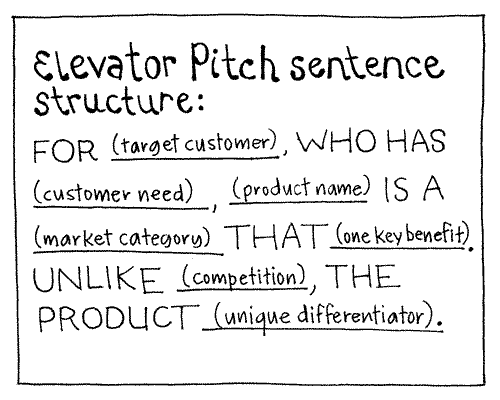 Can you explain it in 30 seconds? What is the elevator pitch for your app idea?
Can you explain it in 30 seconds? What is the elevator pitch for your app idea?
What is the elevator pitch for your idea?
Before you explain to us all the wonderful features your app has can you clearly define the primary problem and the clear solution your app will provide.
What is it’s core function? Why will it appeal to users? Who will use it?
It’s important to have a clearly defined target market for your app… so don’t just decide “EVERYONE WILL USE IT!”
Quite Simply, how is it going to make life better for someone and how would benefit the most from your app?
Your app can have secondary purposes and functions, we understand that we’re not a Nazi regime here, but defining a clear problem for your app to solve is the key to delivering success faster.

Step 2: Start Sketching
You’ve probably told 10 people about your idea by now, revised things each time too, but are probably yet to put anything on paper? By taking the time to sketch out your app you are laying the foundation for your future app interface. This will not only help you visually conceptualize the main features of your app but identify issues which you may have overlooked so far.
It’s called App prototyping- At Appomate we call it See It Before You Build It (SB4UB)
It doesn’t have to be anything they’ll hang in the National Gallery of Victoria, even a rough sketch of your app helps everyone on your team understand the mission.
These sketches will be incredibly useful to any developer who needs to understand the functions your app requires.
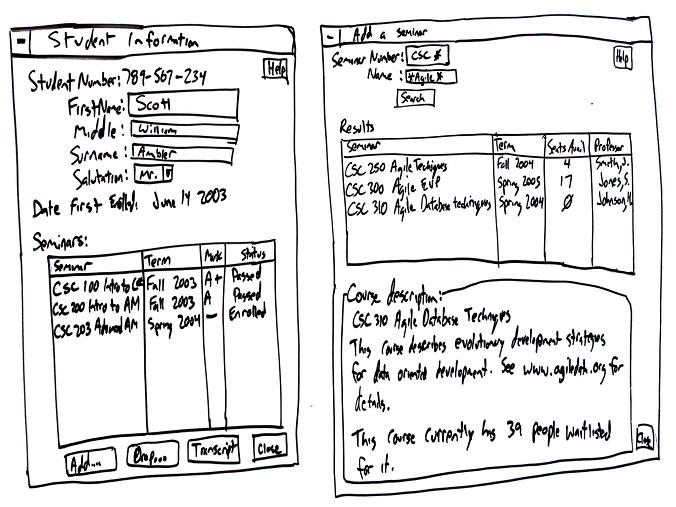
Step 3: Research
You’ll also need to do some of your own research (don’t just take our word for it).
Four keys areas you should do some investigation into are;
- Find out if there are other apps which already do what your idea is.
- Get an idea of how you want your app to look. Have you seen an app you like which is similar?
- Look for information on any feature you think you’ll need for your app.
- Find out how you can market and monetize your app.
- Do some research on app revenue models. Try and at least have some idea on how you can make money with your app.
While you may think that you have a revolutionary idea, you may get your hopes crushed very quickly.
It’s not hard to Google dating app or food safety app to get an idea of what’s out there. The fact that there are more than 1 million apps out there for Android and iOS, building something completely unique is nearly impossible.
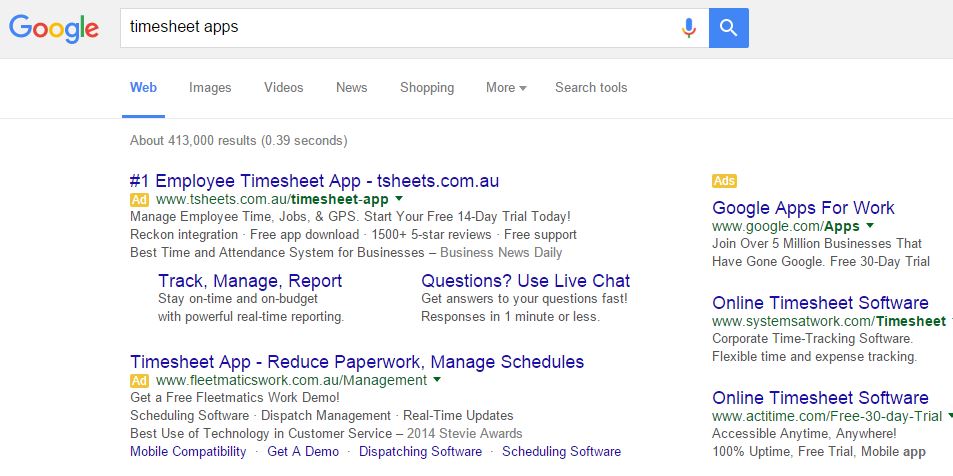 Nonetheless, you must not get discouraged by those who may be playing in the same arena.
Nonetheless, you must not get discouraged by those who may be playing in the same arena.
People were posting 140 character updates on Facebook before Twitter came along. Just because it’s been done before doesn’t make it a bad idea, you just have to be clear on how your idea makes things better than what’s already there.
The Final Step
Our App Development team are keen to help you ‘flesh’ out your idea and provide experienced consultation regarding revenue streams, app competitors, app feasibility as part of our App Exploration Sessions.
We can also able to help you document your app so you can get the information you need from an app developer relating to time and costs.
If you’ve done all the above and you’re ready to take the next step, it might be time to speak to an app developer.
Call our friendly team on 1300 781 794 so we can assist you further.
Why App Prototyping: See It Before You Build It (SB4UB)
Mobile App Prototyping
Everyone has got a great mobile app idea, but it’s quite challenging to do market research and raise funds for your app idea.
At Appomate, we understood that this a common problem faced by app entrepreneurs so we designed an approach called See It Before You Build It (SB4UB).
(SB4UB) helps app entrepreneurs get a visual representation of how the app will look before even developing it.
How SB4UB helps to develop a better mobile app with market research?
- Helps you better understand your customers
- Know about your competitors and find how they approach the market
- Test your product before launch
- Take user feedback and incorporate in the development cycle
How raising funds for your mobile app can easier with SB4UB?
Most of us approach mobile app development companies to get development estimation. The development cost in most parts of Australia especially in Melbourne, Sydney might vary anywhere from $50,000 to $500,000 to build your app idea.
But we know it’s difficult for a bootstrapped app startup to raise funds to build the app. When you have a validated app idea, you are in a dire need to get the app in front of your audience and get user feedback for iteration.
With SB4UB raising funds for your app startup becomes easy.
But how to go about it?

At Appomate, we’ve helped a number of mobile app entrepreneurs take their simple app idea and turn it into a successful app startup using SB4UB approach.
See It Before You Build It (SB4UB) is a 4-6 week process where our Appomate’s development team works together closely with the app entrepreneurs. During this process, we come up with app documentation, app prototyping – replicating the app screens. We then use these assets to build an application prototype that can be used to raise capital for your app startup from investors, apply for government grants or use for marketing purposes.
We call this “See It Before You Build It” (SB4UB)
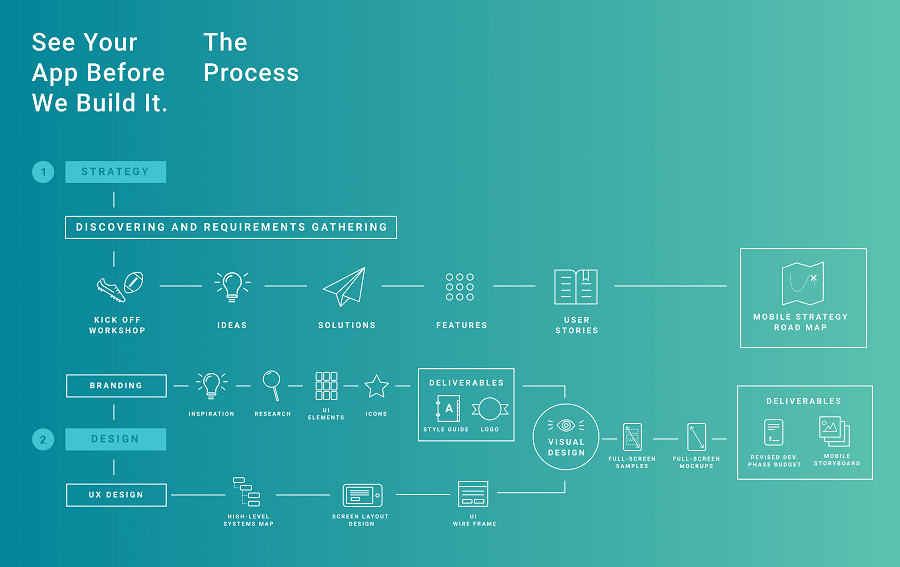 Click here to download See It Before You Build It (SB4UB) framework for your App.
Click here to download See It Before You Build It (SB4UB) framework for your App.
The process is simple. We work with each prospective “app-renuer” to develop a Business Requirement Document which outlines how the app will work, each feature specifications, create wireframes. We also develop actual app screens that will be used within the app once it’s completed. This helps the app entrepreneurs to get a perspective of how their app will look like and also gives them a fair estimation of mobile app development.
These items are necessary when creating an app. Building an app is analogous to building a house, See It Before You Build It (SB4UB) steps are very similar to creating building blueprints, plumbing and electrical wiring information, home’s interior designing, etc.
Without these necessities, it would be ill-advised to start with the construction process like nailing wood, pouring concrete, etc. This shows the significance of starting your app idea with the SB4UB process.
The process most commonly takes 4-6 weeks, and many of our clients have been successful taking their app idea to the next level after raising funds via online marketing campaigns, government rebates, crowdfunding or attracting investment partners.
If you’d like to learn more, simply enter your details below or contact our friendly team on 1300 781 794
How Influencer Marketing Can Help Promote Your Mobile App?
With the extensive usage of Social media apps – influencer marketing has become the go-to marketing strategy for promoting your mobile app businesses.
If you are reading this blog, we assume that you have already developed an app for your startup and shifting your focus from production to promotion mode. Your app may be brilliant and work like a Swiss clock, but without pursuing several methods of marketing, it can languish in the app stores, and your business will languish with it.
We’ve addressed several ways to market a new app in other posts: app store optimization, word of mouth, advertising, and strategic partnerships. Another way to make a big splash is to have celebrities and social media influencers to help bring awareness to your product and brand.
Why influencers are valuable for your app promotion?
Celebrities and other influencers have the power to promote your app based on their exposure, popularity, mission, and values. Whether or not people like them, they get attention, and so your app will, too. They often have a variety of avenues to get their message out, from TV interviews to blogs and Twitter feeds. For better or worse, many people trust celebrities, and the products they promote benefit from the generalized trust.
Keep in mind that these people do not necessarily have to be globally known or have millions of followers and fans on Instagram or Twitter. Someone with thousands of followers can still add great value to your app promotion.
How to identify influencers?
Google Alerts is a great tool. You can set up alerts on topics relevant to your product, and see who’s talking about them, and where.
To find authorities and influencers in your industry, AuthoritySpy is a great tool. To find people who are popular in social media in your industry, try Klout. Klout even ranks them based on their social influence.
There are many other online tools to help you identify influencers. Use the mother of all online tools, Google, and search “tools to find influencers”. ☺
Why would a celebrity help me?
You may wonder why a celebrity might want to endorse your app/product. It might simply be because they get paid, or get a commission from the sale of the products they talk about. But often, it’s because they want to share useful and cool stuff with their fans and followers.
How to secure an Influencer endorsement?
If your app startup is well funded, you may have the budget to hire a professional celebrity broker company to make a deal happen for you. But for self-funded bootstrap app startups, there are more creative ways. It does not have to be a formal, proper endorsement of your app; a quick mention of your app in their blog or social media can get you incredible exposure.
Work out a deal.
Offer an upfront payment or small equity in your app business in exchange for endorsing your app, or some commission or royalty in your product sales. Stamped, an app for reviewing businesses and restaurants has investors like Ellen DeGeneres, Ryan Seacrest, and Justin Bieber.
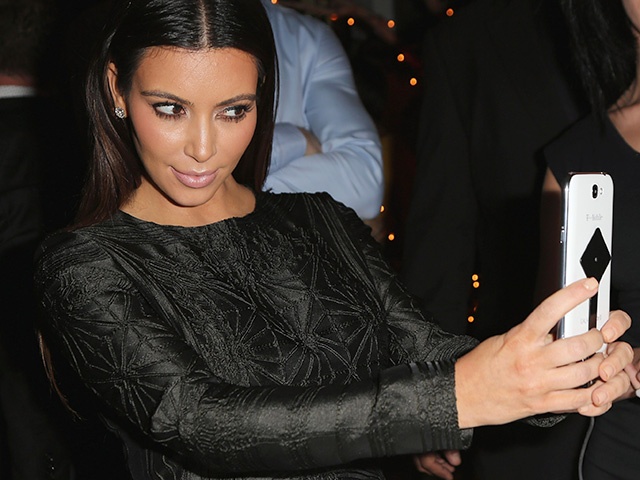 Justin Bieber also took an equity stake in Shots, a selfie-sharing app for which he led a $1,100,000 seed round. Shots’ popularity spiked when Bieber started using it to post personal photos.
Justin Bieber also took an equity stake in Shots, a selfie-sharing app for which he led a $1,100,000 seed round. Shots’ popularity spiked when Bieber started using it to post personal photos.
There are also influencer marketplaces like Tribe where you can find and pay influencers to promote your brand.
Find a common cause
Many celebrities are passionate about some social causes close to their heart—or just like to burnish their reputation. Even if your app doesn’t directly contribute to a social cause, you can associate yourself with a charity or non-profit. For example, you may decide to contribute a certain percentage of your profits to educating kids in underdeveloped countries. Then you can identify and approach celebrities who are already involved in some charities that improve the conditions of kids in underdeveloped countries.
Ask them.
Simply ask your targeted celebrities and influencers to use your product and spread the word if they like it. Educate them on how it would help their fans and followers. It is usually difficult to approach celebrities directly; focus on building relationships with their close associations, like personal assistants, PR managers, hairdressers, and personal trainers. Get those people to use your product and introduce it to the celebrity. Give them free access before the product is even publically launched.
For example, Instagram had Jack Dorsey, the co-founder of Twitter, using the app before it launched. When the app launched, he tweeted about the app to his million-plus followers.
Don’t procrastinate. Be bold.
Before you approach celebrities, you have to believe in yourself and your product. Many people self-sabotage by procrastinating. They find excuses, like ‘My app is not looking good enough yet; it’s not 100% free of bugs yet; if I lose them, I lose them forever;’ etc. Don’t be one of them. Ask for help. There are thousands of people you can approach.
Many celebrities, like Leonardo DiCaprio, Jay Z, Aston Kutcher, Tom Hanks, and Jessica Alba, have all invested into tech startups. It’s certainly becoming a trend for celebrities to get involved in the tech space, and many are inspired and looking for good opportunities.
Understanding Your Minimum Viable Product (MVP) Is Key To Success – Complete Guide
A Minimum Viable Product (MVP) means building a product with basic yet necessary features that allows you to release it to the market immediately. Below are the reasons why MVP is Key to your product success.
At Appomate we’re often asked to build Apps to supplement or complement an existing product, potentially to improve app business processes or create a new revenue stream. In such cases, building an MVP is advantageous because it involves less effort enabling the appreneurs to test their app idea with potential customers/users.
Most of appreneurs approach us with App projects which is in the “idea” phase. At this phase the apprenuers have typically done some market or user research to validate their idea, but when it comes to the budget that’s another story.
We deal with Appreneurs who often only have very little money raised, potentially have investors ready to go when the idea is further along or they are yet to start raising funds, it’s at this point we ask them the below question:
“Have you heard the concept of MVP?”
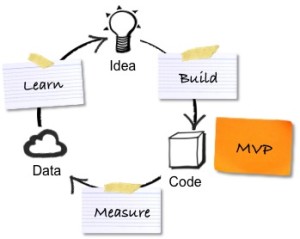
What is “Minimum Viable Product”?
Now, if you haven’t read the Lean Startup yet, add it to your list. It’s the foundation for many processes that companies use.
Minimum Viable Product or MVP is more of a concept or philosophy than a specific process or technique. The idea is to get something to market as soon as possible, get real people using it and then iterate or add features based on user feedback instead of assumptions.
It’s very tricky to actually execute a minimum viable product launch, however. No one wants to put anything but their best foot forward, so why would anyone put something out into the world that’s… unfinished? (Gasp!).
To note, there’s a misconception that an MVP is unpolished or unfinished. That’s not the case. It may not have all the features you dreamed of, but it has all the functionality you need.
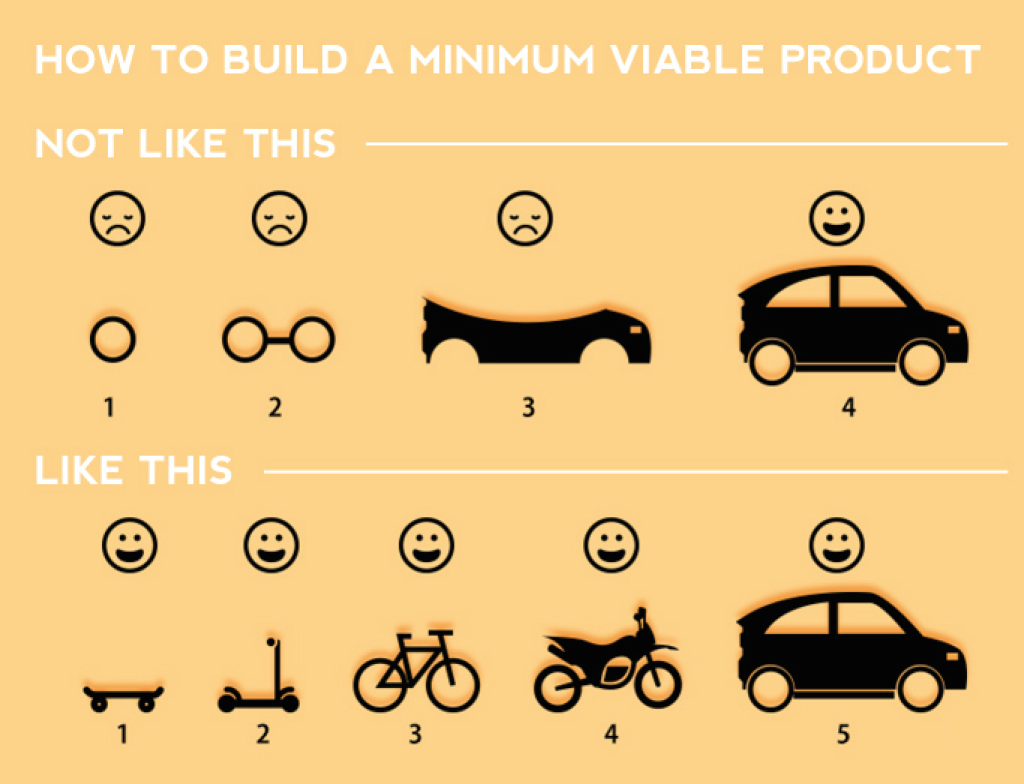
An additional factor is that app businesses shouldn’t waste valuable time and resources on anything that isn’t essential to their business.
The only way to really know what your app needs is to see how people are using it.
The core methodology is “Build. Measure. Learn.” The point is to learn quickly and iterate.
Here’s an Example
Think back to the first time you used Facebook.
Did Facebook look like it does today?
Do you think that Mark Zuckerberg, in his Harvard dorm room, envisioned the Facebook that exists now?
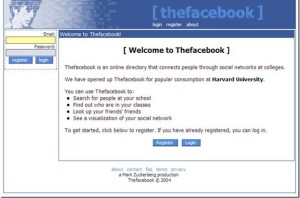
How could he? In fact, some technology that Facebook relies on wasn’t even available back then.
Then, how did Facebook turn to be a social giant now? Initially, Facebook rolled out an MVP to Harvard students and the prototype was tested for user feedback. In fact, some technology that Facebook relies on wasn’t even available back then.
One of the reasons Facebook is especially successful is that they’re constantly assessing, iterating and evolving. In order for Facebook to be successful, they weren’t able to build a product, “take it to market” it and then sit back while the dollars rolled in.
To this day, Facebook develop the code on all of its platforms (website, iOS, Android, etc.) twice a day, every day!
Can you remember about using Twitter for the first time?
Twitter didn’t start out with a “retweet” button, but after the company realized that many people were copying other user’s tweets and pasting them into their Twitter feeds manually they incorporated this into their app.
Instagram? Remember when Instagram had no video? But then Vine came along and everyone was talking about it. So the decision was made to incorporate video to continue to gain the marketplace. Remember when there was no Instagram website? Or no Android version? I do, and my nieces and nephews all had Instagram before I did so I was certainly not an “early adopter” the app.
Instagram’s concept was that they could do better by getting to market, and they’d build an Android version and a web version while iOS users started using the product. They were out there, even though they weren’t finished.
What does MVP mean for your business/app idea?
The term MVP in itself is quite broad. For an app where do you start? Where do you stop? What functions should you include and which can you do without for your launch? Which features are essential?
Below are some guidelines you can use to guide you through that process.
- The App has to look and feel finished. This means it should be fully branded and designed, it shouldn’t have bugs, and every visible button and link should work. First impressions and trust are still immeasurably important– maybe even more so for an MVP approach
- The App’s core functions need to work. For example, if your app is a photo-sharing service, it needs to be able to share photos. It doesn’t need to have full tagging capabilities or social media sharing options yet, but it needs to do what it’s supposed to do.
- Anything that doesn’t absolutely require automation can begin as a manual process. Let’s face it, it’s unlikely your app will generate a million users in your first month. No doubt it would be nice to have a custom-built automated customer service platform, perhaps with live chat, but it’s probably smarter to launch phase one of your app with a simple email address or phone number that users can contact for assistance.
- Implementing change needs to be as simple as possible, with few barriers. When businesses decide to release a “phase one”, “light” or BETA versions of their app with the intention of having it grow, The key is you need to react to how people currently using it. You have to keep improving it. If something clearly needs to be added or changed you need to do this as rapid as possible to keep your users engaged and open to recommending your app to others.
- Owners and Investors need to keep an open mind. While the MVP process is highly successful in app development and technology circles there’s still a lot of trial and error involved. If the decision-makers are fighting the process the whole way, it will surely fail.
Understanding MVP is the key to success: Benefits
- Having a Minimum Viable Product (MVP) helps you to validate your App ideas
- Ready to release the simpler version of your product to the market
- Test the necessary features for your target audience.
- Helps you understand your buyer intent, persona and their preferences
- Helps you to get the user feedback immediately which you can incorporate in your product instantly
Why consider an MVP strategy?
The reality is that many app entrepreneurs should rethink what it means to launch an app.
Traditional methods of product launches are suffering as products are coming to market faster than ever. Developing your idea for 2 years in a dark room, all in preparation for the “Big Reveal” isn’t as smart of a move as it used to be, especially if your competitor launches their product while you’re constantly fine-tuning yours.
If I’ve piqued your interest (and I’m sure hope I have), please research the topic a little more. You’ll find that tonnes of people are talking about it, and a lot of really successful entrepreneurs believe strongly in it.
If you’d like to share your app idea with one of our team members who understand the concept of the MVP and discuss how you could roll out your app idea with this strategy in mind call us today on 1300 781 794
Top 5 things investors look when investing in a tech startup
There is no other business in the world that can scale up as fast as tech startups. Given the competition to invest in startups, Investors not just evaluate startups based on the awesome startup idea that you have come up with. But they delve deep evaluating the core team, the market size, business model, your commitment etc.
When you are in the early stages, getting investors is not easy. Once you invite an investor to consider funding your company, what criteria do they consider?
Here are the top five things Investors look when investing in Startups:
THE ‘A’ TEAM
Investors truly believe in the saying, “Bet the jockey, not the horse”. The majority of early-stage investors say that they actually invest in the people backing the idea, rather than the startup idea itself.
A skillful and passionate team with a proven track record will always have an edge over competitors who have a great idea but a sub-par team.
While investors looking to invest in small business ask these questions to themselves, “Is the founder a doer or a dreamer? Are they determined and ready to put in the necessary work to build the business? Are they trustworthy? What is the core team’s track record?”
MARKET SIZE
Venture capitalists and angel investors consider the size of the target market paramount. How big the company can grow depends on how big the market is for the product. To them, it doesn’t matter how mind-blowing the idea is if the market isn’t big enough. Most investors looking to invest in small businesses are on constant lookout for ideas that work across languages and cultures.
Investors ask this question to the founders, Is your idea universal?
CLEAR BUSINESS MODEL
By looking at your business model, investors can identify how well you have thought out and planned your business.
They will look for how much and how soon the company can make returns, and what the exit strategy looks like.
Competitor analysis, revenue model, customer segments, and distribution channels are a few key things that need to be included in the business model.
RISKS
Investors take on considerable risk by investing in startups—especially early-stage startups. They want to know that the founding team or entrepreneur is aware of all the potential risks, and has developed a risk mitigation strategy to address these risks as they arise.
When they ask you, “What are the risks involved in this business?” the last thing you want to say is that there are no risks. Make sure you perform risk analysis.
The standard SWOT (Strengths/Weaknesses/Opportunities/Threats) analysis is one method to consider the risks and come up with mitigation plans.
SKIN IN THE GAME
Investors look for proof that you strongly believe in your idea. Have you quit your job to get this business started? How much of your personal savings have you invested?
Have you already made some progress with your idea by building a prototype of some sort? Investors are more comfortable getting on a train that is already moving, rather than one that is just an idea.
Assess your start-up by these five criteria. If you were an investor, how interested would you be in your own company?
Considering these elements is one step towards knowing if you’re ready to start fundraising.
If you are interested in finding more funding options for your startup, we have collated a list of venture capitalists, angel investors in Australia. Check out the link.
Don’t forget to share this article with your startup friends and spread the word.
7 App Monetization Strategies for your Mobile App Business
If you are an App entrepreneur/developer/marketer, it is necessary for you to know the top 7 App Monetization strategies to grow your mobile app Business.
In this blog, we dive deep into the different app monetization models available. By doing this, we also discuss which app monetization models are popular among the world’s most successful apps.
1. Paid apps
- This is the basic monetization model where you sell your app for a listed price on the app store or google play store. You need to choose a price from available price tiers which are anywhere from 0.99 cents to 999 USD. Most paid apps are under 10 AUD and there are few expensive apps. Agro Ezi app is one of them at 1599 AUD.
- The model works well for game apps and utility apps. Minecraft pocket at $9 per app made $326 million dollars in 2013 from paid downloads. Shiftworker, a calendar app for shift workers at $2.99 that topped the app store charts for a few months in 2015 is a good example of a paid utility app.
- The advantage of this model is that it provides quick cash flow. You get the money as soon as someone downloads the app but at the same time, it is not easy to convince people to pay as there are many free apps. Your App has to be really unique and top quality for users to pay for it. They are shrinking part of the app store with less than 10% of the apps being paid apps. App store and google play store takes 30% of the revenue made as a transaction fee and pays you only the remaining 70%.
2. Free App with in-App advertising
- In this model, you list the app for free and build a large audience. You then sell advertising space in your app using ad network like Google Admob, flurry, Inmobi etc. These ad networks connect publishers(you, the app builder) with advertisers and manage the whole process of placing and managing advertisements. They take a cut of the money paid by the advertisers.
- If you are big enough, you can also build your own ad serving platform within the app. This gives you the flexibility to decide the price and other terms of advertisement. But the hidden costs in building your own ad server can burn a hole in your budget.
- Facebook follows this revenue model and has its own advertisement management platform. Facebook’s quarterly ad revenue crossed $4 billion in 2015.
- Works well for social network apps and gaming apps where people essentially wants to kill time. It does not work very well for utility apps. It might annoy users when they are trying to get things done.
3. Freemium
- In this model, you list the app for free and users can upgrade to a paid version or users can buy items (more features or physical goods) via in-app purchases. The premise is you engage the users, make them love your app and have them pay to get more.
- Works really well for gaming apps where users need to pay to access advanced levels or special powers. Example, Candy Crush Saga made $1.3 billion via in-app purchases in 2014 from 2% of its users. Dating apps are another example where you can browse your matches for free but need to pay to contact them. Tinder uses such a model.
- An advantage is a low barrier to entry for downloads but finding the sweet spot for paid features takes experimenting. Fewer features for free might create a high churn rate whereas too many features for free may not encourage the user to buy. App store takes 30% of in-app purchase revenue as well.
- The in-app purchase may also involve physical goods like clothes, accessories, etc. Since the app store account is used for payment, it makes the buying process really easy and quick for the buyer. Good news is at least there is no 30% transaction fee for physical goods.
4. Subscription
- In this model, the user pays a monthly or annual subscription fee to use the app. Most of the time these apps offer a 1 week or 1-month free trial to allow users to trial the app before they subscribe.
- Best suited for business/enterprise apps like CRM, invoicing apps and media/entertainment apps like music apps, news apps.
- The advantage is high lifetime value of customers due to ongoing revenue. On the other hand, users expect great customer support, 100% uptime, and bug-free app as they pay a subscription fee.
- Dropbox, Xero, Spotify uses this model.
5. Revenue split
- In this model, you create a marketplace, enable others to make money and then take a commission of the money they make. These apps are free to download and use.
- Uber and Airbnb are the 2 popular apps using this model. Uber takes a 20 to 25% commission of the money the drivers make. Airbnb charges 6% to12% of the money made by people renting out their property. This is the faster-growing revenue model because your users will do the sales for you to make themselves more money. The more money they make, the more you make.
- On the flip side, you need to ensure that the buyers are getting the service/product delivered. You can make them sign all disclaimers and protect yourself legally but if the sellers of product and service do not do the right thing, it will affect your brand. For example, Uber follows a very strict process before allowing drivers to use Uber. They check their past history, police clearance, the condition of their car, etc. to ensure the quality of the service.
6. Build and flip
- In this model, you build an app and sell it for a decent profit in marketplaces to someone who can build further on it. Flippa.com, Chupamobile are some marketplace where you can sell your app source code to other developers.
- This model allows a quick return than other models but the opportunity is very limited. Low-risk low reward. People buy it to save time and money in development.
7. Build a brand and sell to a strategic buyer
- In this model, you build a big user base and sell the app to a big company. You build your app and take it to a stage where you have a lot of active users who love your app, use it frequently and would be very disappointed without it. Big brands who can create a lot more value with your app will knock your door.
i. Microsoft bought Minecraft for $2.5 billion in cash
ii. Yahoo bought Tumblr for $1.1 billion
iii. Facebook bought Whatsapp for $19 billion
Knowing these 7 app monetization models, what do you think works best for your app?
Keep in mind, it does not have to be just 1 monetization model but also a combination of 1 or more monetization models.
Spotify has a free version that uses in-app advertising. But also has a subscription model for an ad-free premium version. They use the revenue to pay royalties to music artists and distributors while taking a 30% commission. A blend of 3 app monetization models.
We hope that this blog post helped you in deciding the right monetization model for your app.
The world is waiting for your Idea, if not now then when?
Schedule a FREE consultation session with our App Experts.
1300 781 794